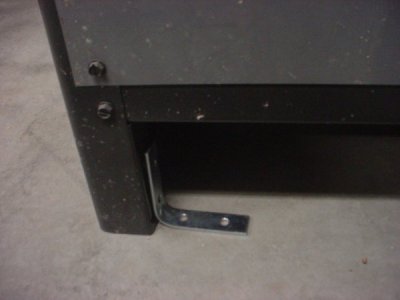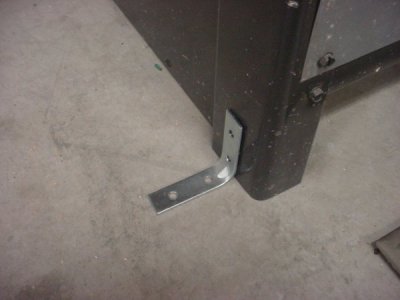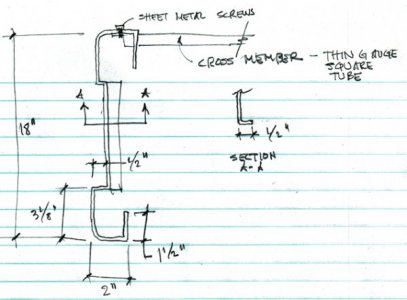- Joined
- Oct 17, 2018
- Messages
- 922
Here's the latest:
39. SIDE GUARD
I drilled out the holes in the mounting plate and moved the motor over. The axle on the motor sticks out too far, but I got it so it just clears the cover. When the machine rattles, it sometimes moves the cover.
40. BELT COVER TAB
Still don't know what this does. Seems like it should act as a stop for the cover.
41 BELT COVER DOOR ALIGNMENT
I decided this wasn't worth the trouble. It aligns enough to work.
42. MOUNTING THE LATHE
I placed the oil drip pan under the lathe, bolted it to the MDF/22Ga steel table. I used an "L" channel under the headstock to bear the weight and add some stiffness. I've mad a few cuts and it seems sturdy enough.
43-44. CHUCKS
I reassembled one. The other one is proving difficult to get apart. Stay tuned.
45. LEVELING THE LATHE
I've decided I'm going to put the machine on the garage floor.
a. Should I bolt it to the floor?
b. I have my grandfather's machinist's level. I will use this to level the machine, Anything I should know?
Once I do this, I'll then align the head and tail stocks.
46. HEADSTOCK ALIGNMENT
What's the best way to accomplish this? The barbell method seems the best, but I'd like to use the 3-jaw chuck, since that's the one I'll use the most. Thoughts?
47. TAILSTOCK ALIGNMENT
I thought I would chuck up a piece of long-ish round stock between centers and make a cut. If it's tapered, I adjust the tailstock until there's no taper.
I also thought I might run out the tailstock as far as it will go and measure it with an indicator at both ends and see if they are the same.
Thoughts?
39. SIDE GUARD
I drilled out the holes in the mounting plate and moved the motor over. The axle on the motor sticks out too far, but I got it so it just clears the cover. When the machine rattles, it sometimes moves the cover.
40. BELT COVER TAB
Still don't know what this does. Seems like it should act as a stop for the cover.
41 BELT COVER DOOR ALIGNMENT
I decided this wasn't worth the trouble. It aligns enough to work.
42. MOUNTING THE LATHE
I placed the oil drip pan under the lathe, bolted it to the MDF/22Ga steel table. I used an "L" channel under the headstock to bear the weight and add some stiffness. I've mad a few cuts and it seems sturdy enough.
43-44. CHUCKS
I reassembled one. The other one is proving difficult to get apart. Stay tuned.
45. LEVELING THE LATHE
I've decided I'm going to put the machine on the garage floor.
a. Should I bolt it to the floor?
b. I have my grandfather's machinist's level. I will use this to level the machine, Anything I should know?
Once I do this, I'll then align the head and tail stocks.
46. HEADSTOCK ALIGNMENT
What's the best way to accomplish this? The barbell method seems the best, but I'd like to use the 3-jaw chuck, since that's the one I'll use the most. Thoughts?
47. TAILSTOCK ALIGNMENT
I thought I would chuck up a piece of long-ish round stock between centers and make a cut. If it's tapered, I adjust the tailstock until there's no taper.
I also thought I might run out the tailstock as far as it will go and measure it with an indicator at both ends and see if they are the same.
Thoughts?




